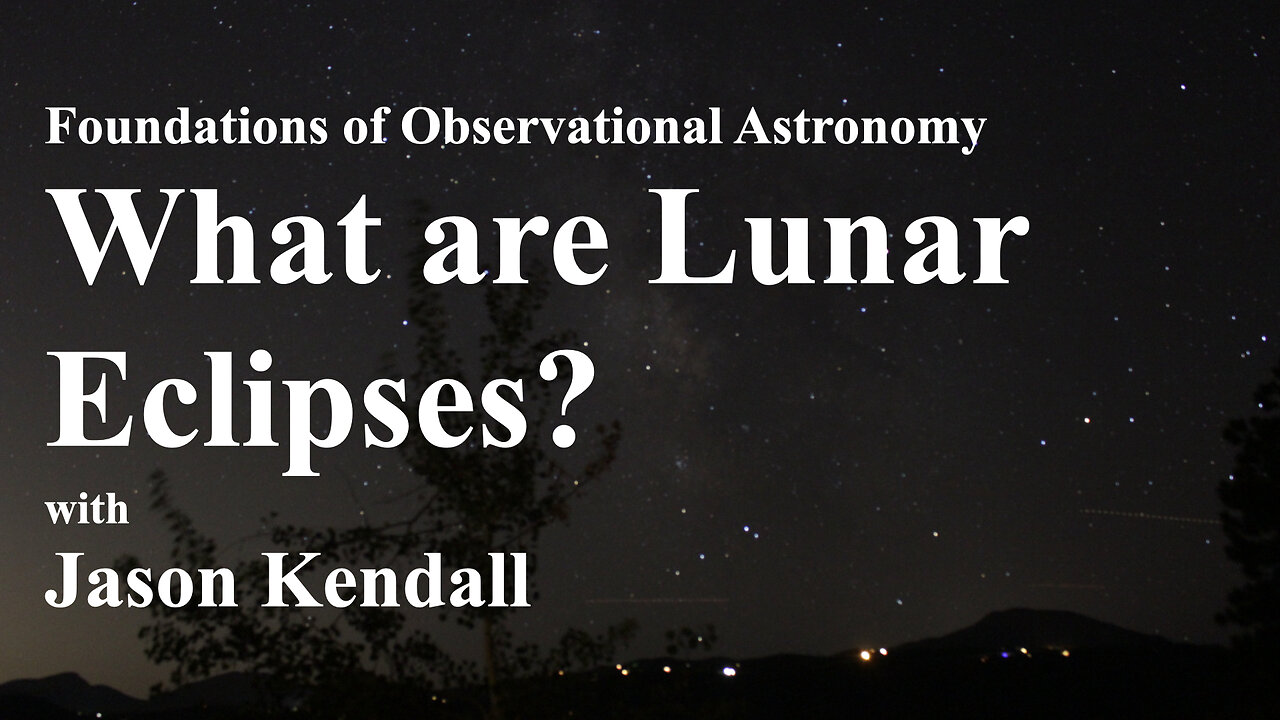Premium Only Content

The Phenomenon of Lunar Eclipses: Understanding Celestial Alignments
In this session, I am pleased to explore the fascinating topic of lunar eclipses and the mechanisms that govern their occurrence. On October 8, 2014, I had the opportunity to capture a total lunar eclipse from northern Manhattan, an experience that deepened my appreciation for these celestial events. During a lunar eclipse, the moon traverses into the Earth’s shadow, a process that is distinct from the moon’s regular phases. Lunar eclipses can be classified into three primary types: penumbral, partial, and total. A penumbral eclipse involves only a partial dimming of the moon, while a partial lunar eclipse occurs when the moon passes through the Earth’s partial shadow, known as the penumbra. A total lunar eclipse, on the other hand, transpires when the moon completely enters the Earth’s umbra, the innermost and darkest part of its shadow. This phenomenon results in a striking deep red appearance, often referred to as a “blood moon.” The red hue is a consequence of the Earth’s atmosphere scattering blue light while allowing red light to pass through, thus illuminating the moon. It is important to note that lunar eclipses do not occur every month. This is primarily due to the moon’s orbit being tilted approximately 5 degrees relative to the Earth’s orbit around the sun. Eclipses are contingent upon the alignment of the Earth, moon, and sun, which only occurs during specific periods known as eclipse seasons. These seasons arise when the line of nodes, where the moon’s orbit intersects the ecliptic, aligns with the sun. Due to the precession of the line of nodes, we can observe up to three lunar eclipse seasons each year, with a complete cycle spanning approximately 18.6 years. Throughout my experiences, I have captured several lunar eclipses, including a notable event on September 27, 1996, during an intermission of a Broadway show, and another on September 27, 2015. Each of these eclipses showcased the moon’s enchanting red color, creating a spectacular view for all who were fortunate enough to observe it. A thorough understanding of the mechanisms underlying lunar eclipses—including the moon’s tilt and the precise alignment of the Earth, sun, and moon—enables us to fully appreciate the beauty and complexity of these celestial events.
-
 15:11
15:11
Cash Jordan
15 hours agoIllegals ‘Force Out’ NYC Millionaires… "Communist" Mayor FREAKS as RESIDENTS LEAVE
26.2K21 -
 43:03
43:03
RiftTV
7 hours agoLeftists Scheme To Destroy the Economy | Guest: Brad Miller | DC Dive
17.4K3 -
 6:52
6:52
ThinkStory
15 hours agoThe INSANE Pennywise Daughter Theory - IT: Welcome to Derry
10K -
 7:49
7:49
Blackstone Griddles
13 hours agoEasy Weeknight Meals: Southwest Patty Melt
15.7K -
 52:51
52:51
A Cigar Hustlers Podcast Every Day
23 hours agoEpisode 2 Hustler Every Day
11.3K -
 LIVE
LIVE
FyrBorne
2 hours ago🔴Battlefield 6 Live M&K Gameplay: Assault Might Actually Be OP In REDSEC
78 watching -
 36:10
36:10
ZeeeMedia
16 hours agoCash Quickly Becoming ILLEGAL & Silicon Valley's Devilish Endeavors | Daily Pulse Ep 140
62.5K40 -
 LIVE
LIVE
PudgeTV
2 hours ago🟣 Arc Raiders - Gaming on Rumble | Toxic Tuesday Tantrums
81 watching -
 LIVE
LIVE
BBQPenguin_
4 hours agoBATTLEFIELD 6: UPDATE NOT WORKING ON PS5?!🤯 NEW Update (1.1.1.5) - First Impressions!
18 watching -
 22:38
22:38
Standpoint with Gabe Groisman
19 hours agoFrom Democrat to Conservative. Florida Rep Hillary Cassel Explains
26.3K5